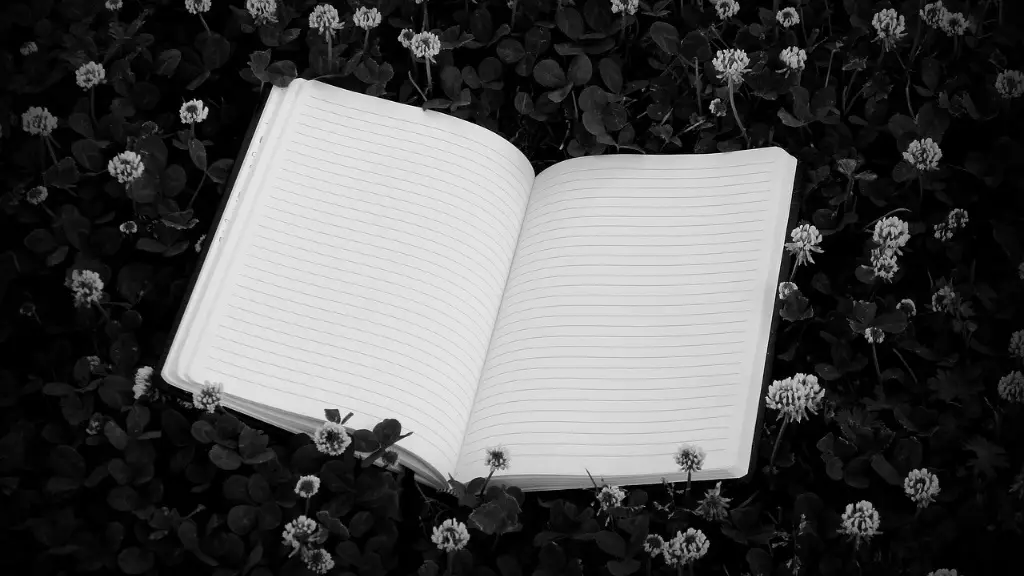What is Meaning in Poetry?
Poetry is a form of creative expression that is defined by its use of language as an art form. It can be seen as a combination of words, rhythm, and aesthetic expression that conveys an emotion, idea, or opinion. Unlike other forms of writing, poetry is often difficult to interpret due to its tendency to be abstract and open to various interpretations. Due to this, the question of what is meaning in poetry comes up often.
In order to answer this question, we must first consider the different components that make up poetry. A poem can be composed of many elements depending on the poet’s goals and the form used. When we consider the meaning behind these components, the answer to what is meaning in poetry becomes clearer.
Themes
Themes are a fundamental element of poetry and are key to understanding what a poem is trying to communicate. The themes in a poem are often complex and subtle, but they convey the overall message of the poem. These themes can be conveyed through the use of imagery and symbolism, and often have multiple layers of meaning. In addition, themes may also represent the poet’s life experiences, passions, and beliefs. For example, a poem may have themes of love, family, loss, or hope.
Imagery and Symbolism
Imagery and symbolism are often employed in poetry to evoke emotions and provide insight into the poem’s message. Imagery consists of words and phrases describing a scene in vivid detail, evoking a response in the reader. Symbolism involves the usage of imagery to represent or stand-in for things not specifically mentioned. The meaning behind the symbols may be literal or figurative, depending on the context of the poem.
Consider the following example from “The Road Not Taken,” by Robert Frost: “Two roads diverged in a yellow wood/And sorry I could not travel both/And be one traveler, long I stood/And looked down one as far as I could/To where it bent in the undergrowth”
In this example, the road is a symbol for life’s choices and paths. The traveler must choose one path and does so with regret as there are many more options and opportunities he will not be able to explore.
Rhythm and Meter
Rhythm and meter are fundamental components of poetry. The rhythm of a poem is a pattern of beats that can be discerned by the listener or the reader. Meter is defined as the number of feet in a line of poetry. Different combinations of feet can create different effects. For example, an iambic pentameter consists of five iambs, or two-syllable words with the stress falling on the second syllable. This pattern can be used to convey a sense of inevitability, as in Shakespeare’s sonnets.
The rhythm and meter of a poem can also impact its overall meaning. By repeating certain words or phrases and utilizing specific poetic devices, a poet can emphasize certain words and convey an idea more clearly.
Figurative Language
Figurative language is another important element of poetry. Utilizing figures of speech such as metaphors, similes, and hyperboles, a poet is able to evoke emotion and offer insight. Essentially, figurative language is a way of expressing ideas and concepts indirectly, often making them more vivid or powerful.
In the opening line of “My Last Duchess,” by Robert Browning, the narrator uses a metaphor to convey a range of complex emotions: “That’s my last Duchess painted on the wall,/ Looking as if she were alive.”
The metaphor of the Duchess, and the suggestion of her death, evoke feelings of sadness, helplessness, and regret in the reader. This is an example of how figurative language can be used to enhance the meaning of a poem.
Sound and Word Choice
Sound and word choice are important components of poetry. A poem’s sound can contribute to its meaning, as the sound produced by certain words or phrases may evoke particular emotions. Similarly, the words used can have a significant influence on the meaning of the poem. Certain words may have a specific connotation or evoke emotion in the reader.
In the case of William Wordsworth’s “The World is Too Much with Us,” the words enable the reader to feel a sense of longing, sadness, and even regret. The phrase “little we see in Nature that is ours,” conveys a sense of longing for a simpler, more idyllic time.
Conclusion
The answer to what is meaning in poetry is often difficult to answer as it is often an abstract and subjective concept. However, when we consider the different components that make up poetry, such as themes, imagery, symbolism, rhythm, and word choice, the overall message of a poem becomes clearer. By examining the various elements of a poem, the true meaning behind the words can be found.

